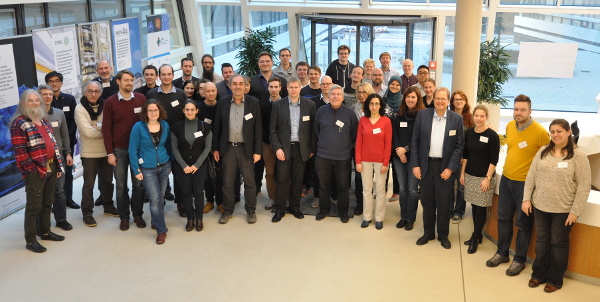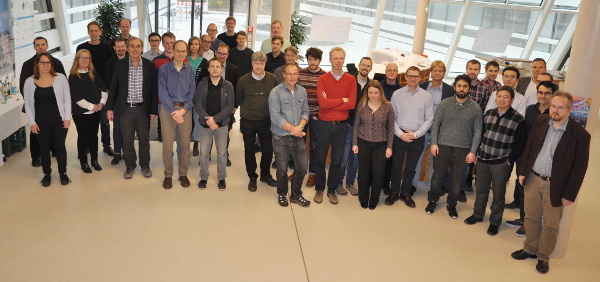URL: https://petra3-extension.desy.de/e85210/@@siteview
Breadcrumb Navigation
News
The Latest Information on PETRA III Extension Project

In December 2017, the first "friendly users" are performing experiments using the 4-circle instrument in the downstream experimental hutch at Chemical Crystallography beamline P24

23- 24 November:
Hard X-Ray Photoelectron Spectroscopy at PETRA III: new possibilities at the dedicated P22 beamline
The P22 beamline in the Ada Yonath Hall of the PETRA III extension is one of three new beamlines that saw first light in 2017. The beamline is dedicated to hard X-ray Photoelectron Spectroscopy (HAXPES) techniques and comprises a number of specialized instruments built and operated in collaboration with external user groups. These include a HAXPES spectroscopy setup with optional multi-channel spin detection using a 2D spin filter (currently being tested at beamline P09), an energy filtered hard X-ray excited PEEM (HAXPEEM) for spatially resolved spectroscopy, k-space microscopy using a time-of-flight spectrometer and a high-pressure HAXPES instrument designed to reach pressures up to 10 bar.
In view of the upcoming first proposal call for this beamline, the workshop aimed at bringing together the groups contributing to the P22 project as well as presenting the unique capabilities to a wider user community. Ample space was offered for scientific exchange and discussions. The strong interest and diversity of the field was illustrated in 13 scientific talks and 53 participants from 10 different countries. Special user requirements for the different techniques were discussed as well as future perspectives for HAXPES at PETRA IV.

9-10 November: Swedish Materials Science Beamline workshop
The construction of the Swedish Materials Science (SMS) beamline P21 at PETRA III is approaching completion and first beam is anticipated in spring 2018. Therefore a workshop was organized at DESY for the Swedish user community and beyond to communicate the technical status and discuss user requirements, beamtime allocation and administrative measures to assure best use by the Swedish materials science community. The workshop was attended by about 40 participants who were interested to learn about the construction status of the in-line and side branches of the SMS beamline. The scope of scientific applications was highlighted in three sessions on catalysis and corrosion/electrochemistry, functional materials, and structural materials. Detailed beamline parameters and specific scientific applications were presented in a poster session.


